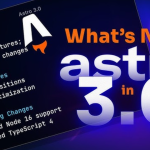In the ever-evolving landscape of software development, Java remains a stalwart language with immense popularity and versatility. If you’re an aspiring developer or an experienced programmer looking to delve into the world of Spring Boot 3, Spring 6, and Hibernate, you’re about to embark on a transformative journey. This comprehensive guide will not only introduce you to these powerful Java frameworks but will also provide insights and strategies to help you master them, all while respecting the basics of search engines and SEO.
The Java Ecosystem: A Brief Overview
Before we delve into the intricacies of Spring Boot 3, Spring 6, and Hibernate, let’s take a moment to understand the significance of Java in the world of software development.
Java: The Evergreen Language
Java, known for its platform independence and extensive libraries, has been a dominant force in software development for decades. It powers everything from mobile applications and web services to enterprise-level systems. With a vast community and strong industry demand, Java skills are highly valuable for developers.
Spring Boot: Simplifying Java Development
What Is Spring Boot?
Spring Boot is a framework within the broader Spring ecosystem that simplifies the development of Java applications. It provides a streamlined way to set up and build production-ready applications with minimal configuration.
Why Spring Boot?
- Rapid Development: Spring Boot offers an intuitive and efficient way to develop applications, reducing boilerplate code and allowing developers to focus on core functionality.
- Production-Ready: Built-in features for security, monitoring, and scalability ensure that Spring Boot applications are ready for deployment in production environments.
- Versatility: Spring Boot can be used for a wide range of applications, from microservices and web applications to data processing.
Spring 6: The Evolution of the Spring Framework
What Is Spring 6?
Spring 6 is the latest iteration of the popular Spring Framework, known for its support of enterprise applications and its lightweight nature. Spring 6 introduces several enhancements and features to further simplify application development.
Key Features of Spring 6:
- Reactive Programming: Spring 6 embraces reactive programming, allowing developers to build asynchronous and non-blocking applications.
- Enhanced Testing: The framework provides improved support for testing, making it easier to write unit and integration tests.
- Dependency Injection: Spring 6 continues to excel in dependency injection, enabling the creation of loosely coupled and maintainable code.
Hibernate: The ORM Solution
What Is Hibernate?
Hibernate is an Object-Relational Mapping (ORM) framework that simplifies database interactions in Java applications. It bridges the gap between the object-oriented Java world and relational databases.
Why Hibernate?
- Efficient Database Access: Hibernate abstracts complex database operations, making it easier to perform CRUD (Create, Read, Update, Delete) operations.
- Portability: Hibernate allows developers to write database-independent code, making it easier to switch between different database systems.
- Caching: Hibernate incorporates caching mechanisms, enhancing application performance by reducing database queries.
The SEO Perspective
As you embark on your journey to master Spring Boot 3, Spring 6, and Hibernate, it’s essential to consider the role of search engine optimization (SEO). In an industry that relies heavily on online resources and documentation, adhering to SEO best practices can enhance your visibility and reach as a developer.
SEO Best Practices:
- Quality Content: When creating tutorials, blogs, or documentation related to Spring Boot, Spring 6, or Hibernate, prioritize high-quality and informative content that addresses common developer queries and challenges.
- Keyword Optimization: Identify relevant keywords and phrases related to these frameworks and incorporate them naturally into your content. This can improve your content’s visibility in search engine results.
- Meta Tags: Craft compelling meta titles and descriptions for your articles or tutorials to entice users to click on your search results.
- Backlinks: Collaborate with other developers or websites in the Java ecosystem to build backlinks. High-quality backlinks from authoritative sources can enhance your content’s ranking.
Conclusion
Mastering Spring Boot 3, Spring 6, and Hibernate is a journey that can open doors to exciting opportunities in the Java development world. These frameworks empower developers to create efficient, scalable, and production-ready applications.
As you embark on this journey, remember to leverage the power of online resources and documentation while respecting the basics of search engines and SEO. By creating valuable and SEO-friendly content, you can contribute to the Java developer community while enhancing your own visibility and recognition as a developer.
Stay curious, keep learning, and embrace the world of Spring Boot, Spring 6, and Hibernate. Your path to Java excellence begins here.









